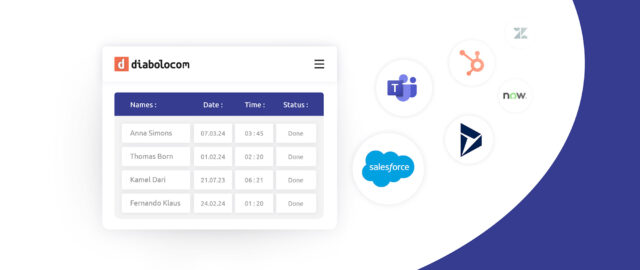The line between bot and intelligent IVR is very thin
What are the points of convergence between the bot and the smart IVR (Interactive Voice Response)?
Both are available 24 hours a day, 7 days a week, and their application requires a structured approach to data analysis. In the case of the bot, however, this is a more complex task, often requiring time and resources to gradually improve its competence.
“Most of the customers I met when I was a Sales Representative thought they needed a bot but their project was feasible with a smart IVR,” explains Florian Schwarz, Marketing Director at Diabolocom and former Sales Director at the company. “The important thing is to collect the data and transmit it to the right person at the right time.
Useful for calls at peak times, bots are not very popular with people. According to a recent survey conducted in France, over 80% of consumers believe that they cause a deterioration in the quality of customer service.
Nathalie Laumet, Director of Customer Service at Wonderbox, explains the rejection of bots by users: “A bot can answer simple questions but lacks social skills. The agent ensures a human and sophisticated experience for the customer, as he is able to answer complex questions and carry on a conversation”.
The point is that the bot is still too far from the human experience required by most consumers. Therefore, the agent remains an essential intermediary between brands and their customers.
Optimize interactions with customers in 3 steps
1) Before receiving the call: Intelligent IVR
“Press 1, press 2, press 3…” We all know the traditional IVR menus, and we don’t necessarily have a positive image of them: we get lost, make mistakes, or wait until they let us know that all the agents are busy.
With an intelligent IVR, the relationship with the agent is flexible, fast, and personalized.
Imagine that a person has already contacted a company’s customer service department in the past: the IVR will automatically recognize his or her phone number and, based on all the data the company has on this user, the call will be forwarded to the most appropriate agent.
Interactions with agents improve the customer experience. However, some requests can be handled perfectly without going through an agent, such as knowing the status of an order. Thanks to the intelligent IVR, the customer enters his order number and receives the delivery status via a voice synthesis message!
This is the case with Wonderbox, according to Nathalie Laumet. “An intelligent IVR reduces telephone waiting times and distributes the call to the best agent. Therefore, Wonderbox customers do not spend more than 40 seconds in the Interactive Voice Response.
2) During the interaction: the agent interface
“Giving the agent all the information he needs helps increase his efficiency. When a client calls, you can take a look at the history of the exchanges we had with him,” explains Nathalie Laumet.
Thanks to a dynamic agent interface that adapts to the client’s journey, the agent has the essential information before and during the call, without having to juggle different interfaces, source of error, waste of time and stress. The call scripts contain the most relevant data related to the call: choice made in the IVR, last contact with the company, last consultant who assisted the client, etc. In addition to this information, the agent now has a predetermined text before his eyes, which supports his argument and facilitates his speech.
The single agent interface is a time saving source and its efficiency is undeniable. Having the right information makes the agent more efficient. Therefore, you can focus entirely on solving the client’s problems and relationship skills.
3) After the call: integration with business tools (CRM, for example)
Who has never received a text message or email from customer service? Most of the time they are sent automatically after a call and summarize the information exchanged over the phone with an agent. Integration with business tools enables the implementation of post-call workflows.
One of the advantages of the Diabolocom solution is that it provides ready-to-use connectors for most business tools. In the case of Wonderbox, the Diabolocom solution integrates natively with your Salesforce CRM.
The agent, bot of the future?
The line between the bot and the smart IVR is very thin. In both cases, you need to understand the information processing mechanisms, identify previous data sources, and classify contact patterns, distinguishing between those that can be automated and those that cannot be automated. Quality, relevance and structure: the information architecture is fundamental.
Of course, bots and IVR technology are complementary. But, to improve the efficiency and productivity of customer service agents, implementing an intelligent IVR is probably the first step. As already mentioned, most projects can be implemented without the need for a bot.
Curious to know more about Diabolocom?




